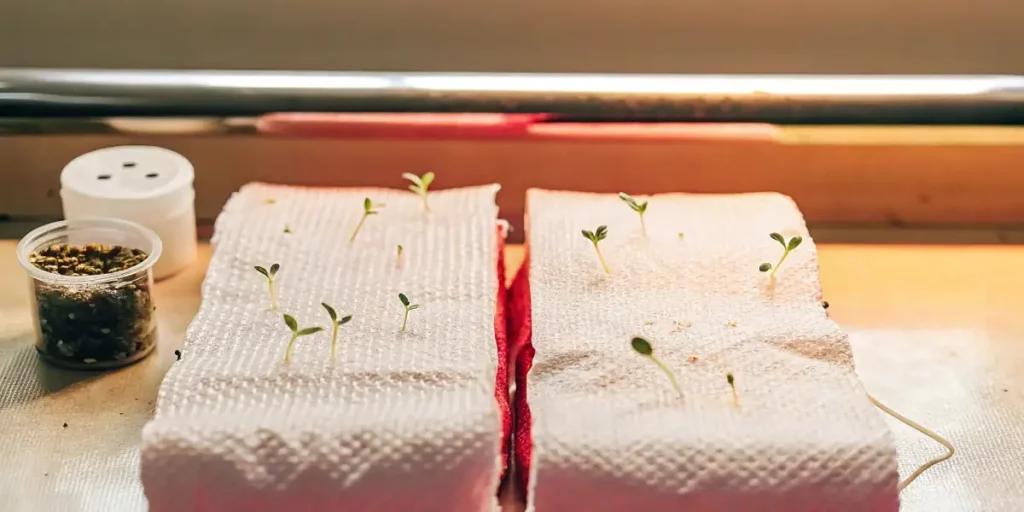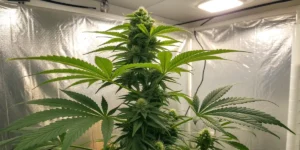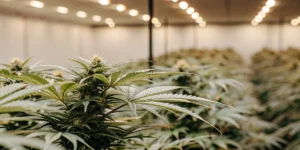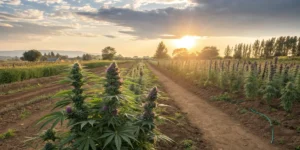Northern Light Auto is a popular autoflowering strain prized for its resilience and ease of cultivation, making it ideal for both novice and experienced growers. This step-by-step guide will assist you in nurturing this fantastic strain effectively. Begin by purchasing high-quality seeds from a reputable supplier to ensure optimal growth and yield. TThis strain is known for its rapid growth cycle, usually maturing from seed to harvest in around 10 weeks.
Once you have your seeds, the next step is germination. Soak the seeds in warm water for about 24 hours until they sink, indicating hydration. Alternatively, you can use the paper towel method by placing seeds between two moist paper towels inside a plastic bag. Keep them in a dark, warm place until they sprout, usually 1–3 days. As soon as the seeds sprout, immediately transfer them to small pots with quality soil, ensuring a balanced pH of 6–7.
Throughout their growth, these plants require ample light. If you’re cultivating indoors, use full-spectrum LED grow lights, positioning them 12–15 inches above the seedlings. This variety prefers 18–24 hours of light daily. Outdoors, ensure they are planted in an area that receives abundant sunlight. The strain is resilient and tolerant of cooler climates, but it’s still crucial to avoid frost exposure.
Water the plants regularly, but do not overwater to prevent root rot. A good rule is to water them until you see about 20% runoff from the pot. To spur growth, integrate a mild nutrient regimen by supplying essential macronutrients like nitrogen, phosphorus, and potassium, but in reduced quantities compared to photoperiod strains due to their shorter lifecycle.
Pruning and training techniques such as Low-Stress Training (LST) can be applied cautiously to optimize sunlight exposure and aeration. Regularly check for pests and diseases, particularly mold due to dense buds, and address immediately if detected. By maintaining proper airflow and humidity levels, you can prevent most common issues before they arise.
Monitor the trichomes as the plants mature. Harvesting is optimal when trichomes turn milky with a few amber ones, indicating peak potency. After harvesting, dry and cure the buds properly to enhance flavor and potency. With dedicated attention to each stage, growing GMO Auto Strain or other robust autoflowers like Northern Light Auto can be a rewarding and fruitful endeavor, providing bountiful yields of high-quality cannabis.
Strain Overview: Traits, Effects & Genetics
This celebrated strain is known for its remarkable resilience and ease of cultivation, making it a favorite among both novice and experienced growers. This auto-flowering variant of the iconic Northern Light lineage embodies a robust genetic background, thanks to its roots in an exemplary blend of Afghani and Thai genetics. Its auto-flowering nature simplifies the growing process as it automatically transitions from the vegetative stage to the flowering stage, regardless of light cycles, usually completing its lifecycle in a short 10 to 12 weeks. With this trait, it seamlessly combines minimal effort with a high yield, producing dense, crystal-coated buds that are a grower’s delight.
Aesthetically, the plants tend to be compact and bushy, a characteristic inherited from their indica-dominant heritage. They typically reach heights of up to 90–120 cm when cultivated indoors, making them an ideal choice for growers with limited space. The plants exhibit broad, deep green leaves and are renowned for their heavy, resin-coated buds that exude a sweet, pungent aroma. Upon maturity, they display a stunning mix of purple and blue hues, thanks to their ability to thrive in cooler climates. Their vigorous growth and resistance to pests and mold further highlight why this strain is a preferred option for many.
In terms of effects, it delivers a relaxing and euphoric high, characteristic of its indica dominance. Users can expect a gentle yet profound sense of calm and tranquility, making it a perfect evening strain for unwinding or managing stress and insomnia. Medicinally, its soothing properties are also leveraged to alleviate chronic pain and anxiety. Its genetic background facilitates a smooth, enjoyable smoke, rich with earthy, sweet flavors accentuated by hints of pine and citrus. This delightful mix of taste and effect makes it not only a treat for consumers but also a highly functional choice for therapeutic purposes.
Optimal Environment to Grow Northern Light Auto Successfully
Growing Northern Light Auto cannabis requires an understanding of its ideal environmental conditions to ensure a successful harvest. This strain is known for its resilience and adaptability, making it a great choice for both indoor and outdoor growers. However, to maximize the yield and potency, specific conditions should be met. The environment plays a crucial role in the plant’s growth cycle, influencing aspects such as potency, flavor, and overall yield. Ensuring a stable climate with controlled variables can make a significant difference in the quality of the final product.
Indoor growers have the advantage of controlling temperature and humidity levels to provide optimal conditions for autoflowering strains. The ideal temperature range is between 21°C and 27°C (70°F to 80°F) during the day, with a slight drop at night. Humidity should be maintained between 40% and 50% during the vegetative stage, gradually decreasing to 30% to 40% during the flowering phase to prevent mold and mildew. Proper ventilation is essential to mimic outdoor conditions and prevent stagnant air, which can lead to pest problems and poor plant development.
When growing autoflowers outdoors, it’s crucial to consider the climate and growing season. These strains thrive in temperate or Mediterranean climates, with plenty of sunlight and moderate rainfall. Planting should ideally occur in late spring, ensuring the plant benefits from long days and warm temperatures throughout its growth cycle. Although autoflowers are highly resilient to fluctuating conditions, providing some protection, such as a greenhouse or cold frame, can shield the plants from extreme weather and pests, ensuring consistent growth and a quality yield.
Lighting is a pivotal factor in the growth of autoflowering cannabis. For indoor setups, utilizing full-spectrum LED or HID lights mimics the natural light spectrum and promotes vigorous growth. Implementing an 18/6 light cycle (18 hours light and 6 hours dark) aids in achieving optimal growth rates, though some growers even opt for a continuous 24-hour light schedule during the vegetative stage. Adequate lighting encourages healthy photosynthesis, resulting in lush, robust plants ready to produce abundant, high-quality buds.
Grow Room Setup for Northern Light Auto Plants
Northern Light Auto plants are celebrated for their resilience and ease of cultivation, making them an excellent choice for both novice and experienced growers. Setting up your grow room effectively is essential to maximize the yield and quality of your harvest. The first step involves selecting an appropriate space, ideally a room where environmental conditions can be easily controlled. A grow tent can be an ideal solution, providing the necessary privacy and insulation. Ensure the space is large enough to accommodate your plants, as this strain grows compactly but requires adequate room for air circulation.
After securing a suitable location, the next critical element is lighting. These autoflowering cannabis plants thrive under high-quality LED lights that replicate sunlight. Due to their autoflowering nature, they do not require a strict light cycle, but most growers find success with a schedule of 18–20 hours of light per day. Make sure the lights are adjustable, allowing you to change their height relative to the plants as they grow, preventing any scorch damage to the delicate leaves.
Temperature and humidity are also pivotal in ensuring healthy plant development. These plants prefer a temperature range of 21–26°C (70–80°F) during the day and slightly cooler nights. They thrive in a relative humidity of around 40–60%, which should be reduced to 30–40% during the flowering stage to prevent mold and mildew. Invest in a reliable thermostat and hygrometer to monitor these conditions precisely.
Furthermore, airflow cannot be overlooked in your grow room setup. Utilizing oscillating fans will help keep the air fresh, reducing the risk of pests and diseases while strengthening the plant stems. Proper ventilation ensures CO2 renewal, an essential factor for photosynthesis. Position the fans to create a gentle breeze rather than a strong wind, ensuring continuous air movement around the plants.
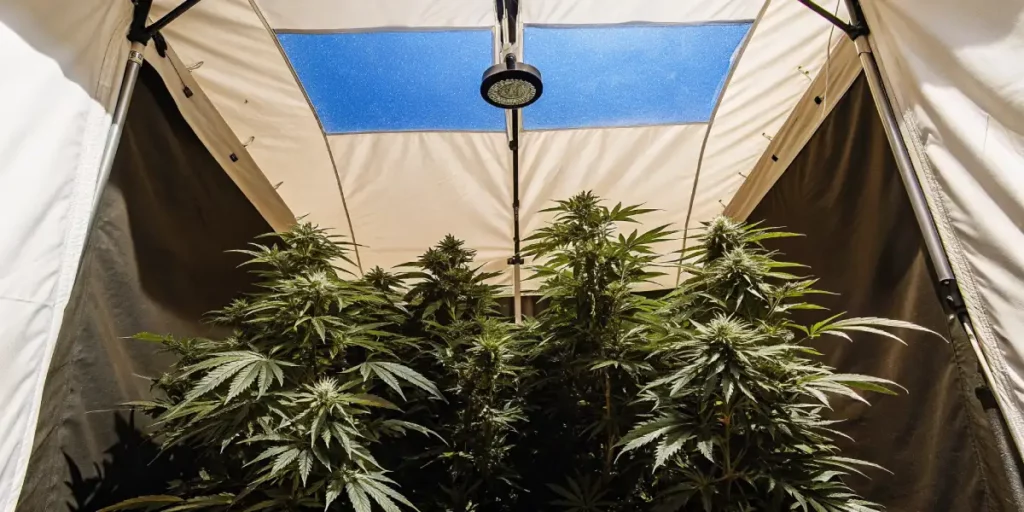
Indoor Growing Tips
Northern Light Auto is renowned for its resilience and straightforward nature, making it an excellent choice for indoor cultivation. The first step in achieving a successful indoor grow is setting up an optimal growing environment. Ensure your grow room or tent maintains a stable temperature between 68-77°F (20-25°C), as drastic temperature fluctuations can stress the plants. Humidity should be controlled, especially during flowering, to prevent mold. Aim for 40-50% humidity throughout the growth cycle. Investing in a hygrometer to monitor these conditions is highly recommended.
Lighting is another crucial factor in cultivating autoflowering strains indoors. These plants thrive under powerful LED or HPS grow lights that mimic the sun’s natural spectrum. For optimal growth, provide 18 hours of light followed by 6 hours of darkness each day. Position the lights approximately 12–24 inches above the plant canopy, adjusting as the plants grow taller. Remember, excess heat from lights can cause leaf burn, so ensure adequate ventilation and airflow to maintain a balanced environment.
Choosing the right growing medium and container is vital for the plant’s root development and overall health. Autoflowers grow effectively in soil or a soilless medium like coco coir. Utilize a well-draining soil mix enhanced with perlite or vermiculite to prevent waterlogging. Select pots that efficiently facilitate root expansion; fabric pots are recommended for promoting air pruning and healthier roots. Transplanting should be limited, as these strains prefer minimal disturbance.
Feeding and watering are essential components of indoor cannabis cultivation. Since these are autoflowering plants, keep feeding schedules light and balanced to avoid nutrient burn. Utilize high-quality cannabis-specific nutrients, following the manufacturer’s guidelines closely. Begin with reduced dosages and gradually increase if necessary. Water your plants when the top inch of soil feels dry, ensuring not to overwater, which can lead to root rot.
Lastly, regular observation and care are crucial for preemptive pest and disease control. Inspect your plants for signs of pests like spider mites or nutrient deficiencies, and address any issues promptly. With consistent monitoring and a stable growing environment, autoflowering strains will reward you with a bountiful indoor harvest. Their relatively short flowering period, typically lasting 8–10 weeks, ensures that even novice growers can achieve impressive results with a bit of patience and dedication.
Outdoor Growing Tips
Northern Light Auto is a highly sought-after strain in the cannabis community, especially valued for its easy-growing properties and resilience. When cultivating this strain outdoors, one of the first things to consider is the climate. This strain thrives in a warm, sunny climate but can also tolerate cooler temperatures towards the end of the season. It is essential to start growing during late spring or early summer to maximize the exposure to natural light and ensure a productive harvest.
One of the significant advantages of this autoflowering strain is its ability to naturally transition from the vegetative phase to flowering based on its age, not the light cycle. This makes it relatively straightforward to cultivate outdoors since it does not require strict light manipulation. Ensure that your plants receive a minimum of six hours of direct sunlight daily. Nature’s light provides the best source of energy that the plants need for healthy growth and a bountiful yield.
Well-draining soil is critical for outdoor growth. While this plant is quite forgiving, ensuring that it is not waterlogged will prevent root rot and other diseases. Consider using a potting soil enriched with organic matter or enhancing garden soil with perlite to promote drainage. Regular, but not excessive, watering is essential — aim to keep the soil consistently moist but not soggy to support optimal plant health and development.
Pest management is an essential part of growing cannabis outdoors. While it’s relatively resistant to pests and diseases, regular inspection is important to catch any problems early. Use natural pest control methods such as neem oil or beneficial insects to mitigate pest-related risks. Keep an eye out for common pests like spider mites and aphids and intervene promptly if they appear.
Lastly, feeding your plants with appropriate nutrients will significantly impact your harvest quality and quantity. Use a balanced nutritional formula during the vegetative stage and switch to a bloom formula when flowering begins. Pay attention to the nitrogen, phosphorus, and potassium balance and consider supplementing with calcium and magnesium if you notice any deficiencies. With the right care and attention, your plants can flourish and provide a rewarding outdoor growing experience.
How to Germinate & Propagate Northern Light Auto
Northern Light Auto, an autoflowering strain cherished for its resilience and swift cycle, is perfect for novices and seasoned cultivators alike. The germination stage is pivotal in ensuring the successful growth and yield of your cannabis plants. Start by selecting high-quality seeds from a reputable source. Inspect the seeds for firmness and a slightly reflective outer layer, as these are signs of viability. Avoid seeds that are too soft or discolored, as they may not germinate effectively and could influence the overall propagation process.
Once you have chosen your seeds, the paper towel method is a recommended technique for germination. Start by moistening two paper towels and placing them on a flat surface. Carefully lay the seeds on one of the towels, ensuring they are spaced apart to prevent tangling during germination. Cover them with the second towel, maintaining a balance between moisture and aeration—too much water can suffocate the seeds or encourage mold growth. Place the paper towels in a shallow dish or container with a loose-fitting lid to retain humidity. Store this setup in a warm, dark location, ideally between 70-85°F (21-29°C). Check daily to ensure moisture levels are consistent.
After 2-5 days, you should notice tiny roots emerging from the seeds, indicating successful germination. Once the roots reach about half an inch in length, the seedlings are ready for propagation. Transfer each one gently to small pots filled with a seed-starting mix or light, airy soil. Make a small hole about half an inch deep and insert the germinated seed, root side down. Cover it lightly with soil and water gently. Ensure the pots are kept in a well-lit area with controlled climate conditions. As Northern Light Auto is an autoflowering variety, it requires minimal intervention in terms of light cycles, making the propagation process more straightforward and hassle-free.
Vegetative Stage: Nurturing Your northern light auto Plants
The vegetative stage is a crucial period for autoflowering cannabis plants as it sets the foundation for a healthy flowering phase. During this stage, your plants focus on spreading their roots and developing robust stems and foliage. Ensuring optimal conditions through careful attention to nutrient intake, lighting, and watering is vital for cultivating vigorous plants. Since this is an autoflowering strain, it naturally transitions to flowering after a short vegetative phase, unlike photoperiod plants.
One key aspect of nurturing plants in their vegetative stage is providing the right lighting conditions. While these strains do not rely on specific light cycles to trigger flowering, ensuring they receive 18–24 hours of light daily can enhance their growth speed and overall health. Full-spectrum LED lights or a mix of cool white and blue spectrum bulbs are ideal. They promote compact, durable structure, preparing the plant for successful budding as it moves to the next phase.
Nutrient management is also essential in the vegetative stage. Autoflowering strains benefit from a balanced regimen of macronutrients, emphasizing nitrogen which supports foliage development. Specialty nutrient solutions designed for cannabis can simplify feeding schedules while ensuring plants receive appropriate micronutrients. Be vigilant about the dosage; over-fertilization can lead to nutrient burn and other issues. Start with lower concentrations, gradually increasing as the plant displays the need for more nutrients.
Watering practices should be adapted to prevent over- or under-watering, as they are significant considerations during this phase. Regularly monitor the soil moisture by observing the top inch of the medium and only water when it feels dry. Additionally, ensure adequate drainage to avoid root rot. Paying attention to these details, alongside maintaining optimal humidity and temperature levels, creates a nurturing environment where your cannabis plants can thrive during the vegetative stage.
Flowering: What to Expect
Northern Light Auto is a popular autoflowering cannabis strain renowned for its resilience and ease of cultivation. During the flowering phase, growers can expect this strain to exhibit impressive characteristics typical of its lineage. The flowering stage generally begins around 4 to 5 weeks after germination. In this period, the plant focuses its energy on producing buds, culminating in a harvest typically around 10-11 weeks from seed. These plants are compact, making them ideal for growers with limited space or those opting for stealthy outdoor grows.
One of the pivotal aspects of the flowering phase is the unmistakable aromatic profile that develops. As the buds mature, a complex yet subtle fragrance begins to emerge, distinguished by earthy pine combined with sweet undertones. This aroma continues to intensify throughout the flowering stage, filling the grow space with a delightful scent that hints at the potency of the forthcoming harvest. Additionally, growers will notice the development of thick, frosty trichomes which are indicative of the plant’s rich cannabinoid content.
A distinct characteristic during flowering is its resilience to various environmental stresses. This strain tolerates fluctuations in temperature and humidity quite well, making it suitable for less experienced growers. However, maintaining an optimal environment will encourage denser bud formation and improve overall yield. Provide adequate ventilation and ensure light exposure remains consistent, as these factors significantly influence bud development and resin production.
As flowering progresses, expect the plant to exhibit beautiful flowering traits, showcasing vibrant colors such as deep greens and purples among its foliage and buds. At this stage, avid monitoring is recommended to spot any signs of pests or diseases early. The compact structure of this strain means it is less susceptible to mold, but vigilance is crucial to ensure healthy plant development. Proper feeding schedules should be adhered to, with a focus on phosphorus-rich nutrients to support the burgeoning flowers.
Overall, the flowering stage is a rewarding experience, especially for those seeking a hassle-free grow. With its balanced characteristics and minimal maintenance requirements, this strain promises an enjoyable cultivation journey culminating in a potent and fragrant harvest. By the end of the flowering phase, growers can look forward to buds brimming with cannabinoids, ready to deliver a relaxing and uplifting experience typical of this variety’s acclaimed high.
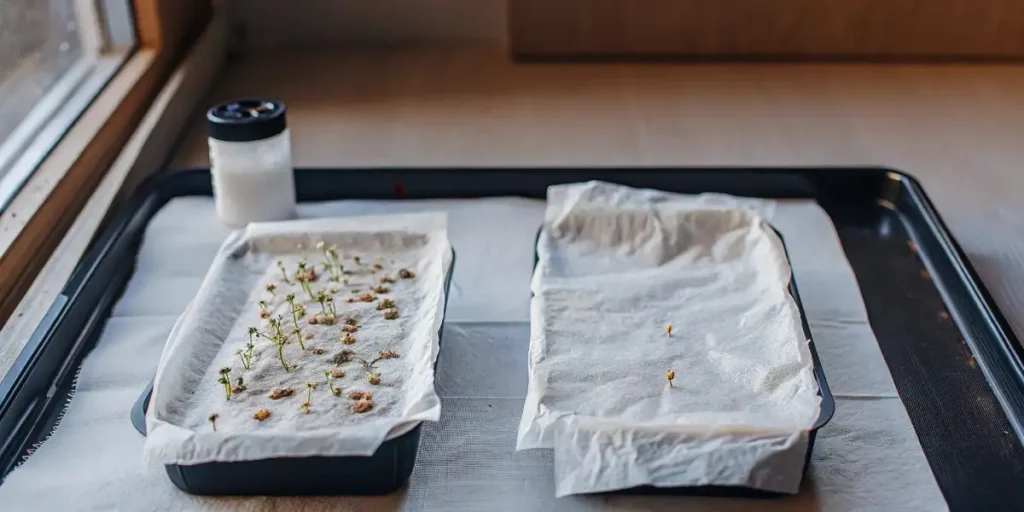
Fertilizers & Nutrient Schedule
Northern Light Auto, a popular strain known for its resilience and uncomplicated growth, thrives with a balanced and thoughtful feeding regimen. The auto-flowering nature of this strain means it has a quicker lifecycle, which requires careful attention to its nutrient needs throughout its development. In its early, vegetative stage, focus on providing a nutrient solution high in nitrogen. Nitrogen is critical during this phase as it supports robust leaf and shoot development, setting a solid foundation for later stages.
As the plant transitions from its vegetative stage to flowering, adjusting the nutrient composition to lower nitrogen levels while increasing phosphorus and potassium is vital. Phosphorus supports the development of healthy buds, while potassium is essential for overall plant health and resilience. Many growers recommend using a well-balanced flowering nutrient mix that provides all the macro and microelements required during this crucial stage. Timely and gradual adjustments ensure the plants receive the right nutrients without sudden shocks or deficiencies.
Feeding frequency is another crucial aspect to consider when cultivating autoflowering strains. A general rule of thumb is to feed the plants once a week, with waterings in between, ensuring the soil stays moist but not waterlogged. Overfeeding can lead to nutrient burn, which is detrimental to the plant’s health and yield. Hence, monitoring plant responses and adjusting the feeding schedule accordingly is essential. Observe leaf color and growth patterns as indicators, as they can offer valuable insights into nutrient needs or potential deficiencies.
Additionally, many growers recommend the use of organic fertilizers and supplements to enhance plant health naturally. Products containing beneficial microbes can enhance nutrient uptake and improve soil health, supporting vigorous growth and abundant flowering. Incorporating these into the nutrient schedule, particularly in the flowering phase, can lead to impressive yields with superior flavor and potency. Maintaining a clean feeding routine, free from harmful chemicals, ensures your plants develop a robust and healthy profile.
Pest and Disease Prevention for Healthy Cannabis Plants
Growing cannabis plants can be a rewarding experience, yielding high-quality buds in a relatively short time. However, to ensure a successful harvest, it’s crucial to maintain the plants’ health by preventing pests and diseases. Healthy plants can better resist infestations and infections, making pest and disease prevention an essential part of your growing strategy. Implementing preventative measures early will help secure the vitality of your plants throughout their life cycle.
One of the first steps in pest prevention is maintaining cleanliness in the growing area. Regularly sanitize tools, pots, and containers to reduce the risk of contamination. Monitor your cannabis plants frequently for early signs of pest activity, such as leaf discoloration or bite marks. Using organic pest control methods, such as neem oil or insecticidal soap, can manage pest populations without the risk of harmful residues. Additionally, introducing beneficial insects like ladybugs can naturally keep pest numbers in check by preying on common cannabis pests such as aphids and spider mites.
Preventing disease in Northern Light Auto plants involves providing the right environmental conditions. Avoid overwatering and ensure adequate drainage to prevent root rot and fungal diseases, which thrive in soggy conditions. Good air circulation is also critical; it helps to reduce humidity levels and prevents the spread of mold and mildew. To maintain appropriate airflow, consider using oscillating fans and pruning lower leaves that can restrict air movement. Careful monitoring of humidity and temperature through the use of hygrometers and thermometers can assist in maintaining optimal conditions for your plants.
In addition to environmental management, choosing disease-resistant strains and seeds from reputable sources can protect your plants against common ailments. Investing in high-quality, genetically stable seeds reduces the likelihood of latent pathogens. Also, rotating crops and not growing cannabis in the same location consecutively can reduce the build-up of soil-borne diseases. Healthy soil full of beneficial microorganisms can also suppress pathogens, so consider using compost teas and organic amendments to enrich your grow medium.
By thoroughly implementing these pest and disease prevention practices, you increase the likelihood of cultivating robust and productive cannabis plants. Consistent care and attention to the growing environment are key to ensuring your plants are healthy and produce quality yields, ultimately leading to a successful harvest.
Harvesting & Drying Northern Light Auto the Right Way
This compact cannabis strain is a popular choice among cultivators due to its size and high yield. The key to maximizing its potential lies in the harvesting and drying processes. Harvesting at the right time ensures optimal potency and flavor. Typically, the plant is ready for harvest about 10–12 weeks from germination. Look for milky white trichomes that have just started to turn amber, indicating peak readiness. This is also when the pistils will be around 70–90% brown, signaling maturity.
Once you’ve determined it’s time to harvest, use sharp, sterilized scissors to cut the plant at the base. Handle it with care to avoid damaging the delicate trichomes that hold much of the plant’s potency. It’s beneficial to remove large fan leaves right after the cut, which makes the drying process more efficient and prevents excess moisture from causing mold. Trimming can further enhance the drying process by allowing more airflow around the buds.
Drying correctly is crucial for preserving quality and ensuring a smooth smoke. Hang the trimmed branches upside down in a dark room with a controlled environment. Aim for a temperature of around 60–70°F (15–21°C) and a humidity level of 45–55%. Use a small fan to keep air circulating gently, but avoid direct airflow on the buds. It usually takes about 7–14 days to dry them properly. You’ll know they’re ready when stems slightly snap instead of bend — this indicates the right level of dryness.
After drying, the curing process begins, which further enhances flavor and potency. Trim the buds from the branches and place them in airtight glass jars. Fill each jar loosely to allow airflow, and store them in a cool, dark place. Over the first week, open the jars daily for about 15–30 minutes to release moisture and check for mold. Curing can last anywhere from a few weeks to several months, with longer durations often yielding better results. Proper harvesting, drying, and curing transform this strain into a superior product that highlights its best characteristics.
Strain Type: Indica, Sativa or Hybrid?
Northern Light Auto is a renowned cannabis strain that falls under the category known as hybrid. This popular strain is descended from its famous parents, the original Northern Lights—a pure Indica—and is modified to offer autoflowering qualities, thanks to the integration of ruderalis genetics. The hybrid nature of this strain encapsulates traits from Indica, Sativa, and ruderalis, providing a well-rounded experience for growers and users alike. This makes it especially attractive to those who appreciate the potent relaxation of Indica, alongside the subtle nuances offered by Sativa varieties.
Despite its hybrid classification, this strain leans predominantly towards Indica traits. This is evident in its growth pattern, as it typically exhibits a shorter, bushier stature common to Indica-dominant strains. The foliage is dense and rich, with broad leaves that allow the plant to maximize photosynthesis. Growers often appreciate this characteristic, as it allows the plant to remain relatively compact, making it ideal for indoor grows where space can be a limitation. The rapid flowering time associated with Indica strains is also present, generally offering a harvest in as little as 8 to 10 weeks.
The Sativa influence is less pronounced but contributes to a well-rounded experience. While the primary effects when consumed are the deeply relaxing and soothing qualities of an Indica, there’s also a subtle uplifting euphoria typical of Sativa genetics. This balance makes the strain not only versatile for various consumer needs but also a joy to cultivate, especially for those who appreciate both the quick flowering time of Indicas and the cerebral effects associated with Sativa strains. Overall, it is a quintessential hybrid that adeptly merges the best characteristics of all its genetic components.
Why Grow Northern Light Auto? Key Benefits for Cultivators
Northern Light Auto is a highly esteemed auto-flowering strain that offers cultivators several compelling reasons to choose it for their growing endeavors. This strain is derived from the classic Northern Light, cherished for its robust growth patterns and reliable yields. The auto-flowering version adds the benefit of a shorter growth cycle, making it an attractive option for those seeking efficiency and quality in their cannabis cultivation.
One of the key benefits of growing this strain is its rapid growth cycle. Unlike traditional photoperiod varieties, auto-flowering cannabis transitions from the vegetative to the flowering phase automatically, usually completing its full cycle in around 9 to 10 weeks. This ensures multiple harvests per year, allowing growers to maximize production potential without compromising on quality or potency.
Moreover, this strain is renowned for its resilience and adaptability, making it a perfect choice for both novice and experienced cultivators. Its genetic lineage provides natural resistance to pests, diseases, and fluctuating environmental conditions, thereby lowering the risk of crop failure. This robustness allows growers to cultivate it both indoors and outdoors, offering a versatile solution for those with limited space or looking to explore various growing environments.
In addition to its ease of cultivation, it provides a rewarding harvest in terms of both yield and quality. It’s known for its dense, resinous buds that deliver a potent, relaxing high along with a sweet, earthy aroma. The sizeable yields coupled with its renowned quality make this strain a financially appealing option for commercial growers and hobbyists looking to optimize cannabis production efficiently.
Overall, it stands out as an excellent choice for any cultivator aiming for a productive and hassle-free growing experience. Its rapid growth, resilience, adaptability, and reward of high-quality yields make it one of the most sought-after auto-flowering strains in the cannabis cultivation community.
Potential Challenges When Growing Northern Light Auto
Northern Light Auto is a popular cannabis strain among growers due to its hardy nature and fast flowering time. However, like any strain, it comes with its own set of challenges. One of the foremost challenges is managing humidity levels, especially during the late flowering stage. While this strain is known for its resilience, it is still susceptible to mold and mildew in high-humidity environments. Ensuring optimal airflow and maintaining humidity levels around 40-50% can significantly reduce the risk of these problems. Understanding and monitoring the microclimate in your grow area is imperative to prevent unwanted complications.
Another notable challenge when cultivating this autoflowering variety is managing nutrient intake. It thrives on a balanced diet but is not overly demanding on specific nutrients. However, beginners might find it tricky to walk this fine line between providing adequate nourishment and overfeeding. Over-fertilization can lead to nutrient burn, which can stunt growth and negatively impact yield. It’s essential to start with a milder nutrient mix and observe how your plants react before gradually increasing the dosage. Regularly checking for signs of deficiencies such as yellowing leaves or stunted growth can help you adjust your nutrient regimen effectively.
Light cycle management is also a crucial consideration for growers. Although autoflowers are less reliant on light cycles to trigger flowering, insufficient light can still impact their overall health and yield. These plants typically require around 18 hours of light daily for optimal growth. However, during the final stages of flowering, reducing light exposure gradually can enhance the quality of buds. Balancing light exposure throughout the growth cycle ensures robust and healthy plants. Monitoring the intensity and spectrum of light can make a significant difference, ultimately leading to a more successful harvest.
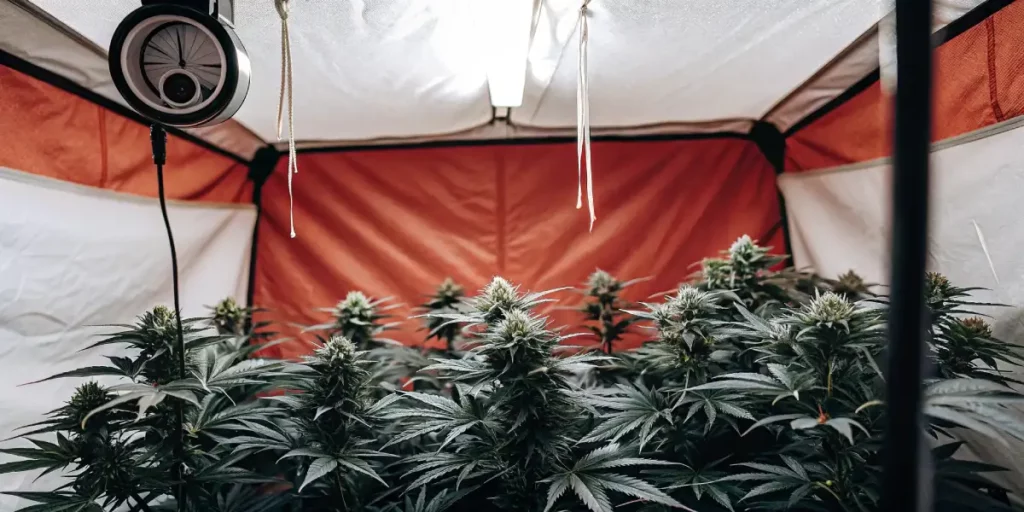
Is Northern Light Auto Worth Buying? Here’s What You Need to Know
When deciding on which cannabis strain to grow, “Northern Light Auto” often comes up as a popular choice among both novice and experienced growers. One of the key attributes that makes this strain worth buying is its ease of cultivation. Known for its resilience, it thrives in different environmental conditions, making it perfect for growers who may not have the perfect setup. Whether you are new to cutting-edge cannabis cultivation or a seasoned grower looking to try something reliable, this variety caters to a wide range of expertise levels.
Another compelling reason to consider it is its fast flowering cycle. Typically, this strain is ready for harvest in just 8 to 9 weeks from seed. This rapid growth is a huge advantage for those looking to maximize their yield in a shorter period. In more temperate regions, it’s possible to achieve multiple harvests throughout the growing season, which can significantly increase your yearly yield. For indoor growers, the quick turnaround can mean more frequent harvests, providing a steady supply of high-quality cannabis.
The quality and potency of its buds are another factor contributing to its popularity. Despite its autoflowering nature, which sometimes dampens potency when compared to photoperiod strains, it delivers substantial THC levels, often between 14–18%. The strain is known for its sweet, earthy aroma and a body-focused effect that many find therapeutic. For recreational users, it provides a relaxing high, while medicinal users might find it beneficial for alleviating stress, pain, and insomnia.
Economically speaking, this strain offers great value for the money. Its cost-effectiveness stems from both the minimal resources required during cultivation and the significant yields it produces. Given its ability to flourish in less-than-ideal conditions without the need for excessive care or nutrient input, growers are able to save on time and costs associated with high-maintenance strains. Additionally, the robust genetic lineage, combined with its autoflowering properties, means less risk and a higher likelihood of successful harvests, thereby reducing the overall financial risk associated with the cultivation.
FAQs
What is Northern Light Auto?
Northern Light Auto is a type of cannabis strain known for its autoflowering properties, which means it will automatically go from the vegetative stage to the flowering stage regardless of light cycle changes. This strain is praised for its resilience, ease of growth, and quick harvesting time, making it ideal for both new and experienced growers. Its effects are typically relaxing and calming, often used for stress relief and to promote sleep.
How long does it take for Northern Light Auto to grow?
Northern Light Auto is known for its relatively fast-growing period, usually taking between 9 to 11 weeks from seed to harvest. This quick turnover is one of the appealing aspects of growing autoflowering strains, as growers can achieve multiple harvests within a year. The growth stages are generally very consistent, thanks to its reliable genetics, which make the cultivation process straightforward and manageable.
What are the ideal growing conditions for Northern Light Auto?
Northern Light Auto thrives in various environments, but it prefers a stable climate with moderate temperatures ranging between 21-26°C (69-79°F) during the day. It can be grown both indoors and outdoors; however, indoor growing allows more control over environmental variables like humidity and light. Maintaining a consistent light schedule and nutrient supply is key to promoting healthy growth and maximizing yield.
What are the effects and flavors of Northern Light Auto?
The Northern Light Auto strain is renowned for its relaxing and calming effects, making it a perfect choice for unwinding after a long day. Its effects are typically more physical than cerebral, promoting sedation and stress relief. As for its flavor profile, Northern Light Auto offers rich, earthy tones combined with sweet, spicy, and sometimes even pine-like undertones, providing a complex and enjoyable smoking experience.
Can beginners successfully grow Northern Light Auto?
Yes, Northern Light Auto is considered an excellent choice for beginners due to its easy-growing nature and resilience to common growing issues like pests and mold. Autoflowering genetics mean growers do not need to adjust light schedules, simplifying the cultivation process significantly. With a bit of basic plant care knowledge, beginners can achieve successful harvests and gain confidence in their cannabis-growing skills.

